Graft Versus Host Disease Blood Transfusion
Graft versus host disease blood transfusion. Graft-versus-host disease GvHD is a syndrome characterized by inflammation in different organs with the specificity of epithelial cell apoptosis and crypt drop out. Graft-versus-host disease GVHD is a well-known complication of allogeneic bone marrow transplantation and is increasingly being recognized after solid-organ transplantation and transfusion of cellular blood products 13. GvHD is commonly associated with bone marrow transplants and stem cell transplants.
Transfusion-associated graft-versus-host disease TA-GvHD is a rare complication of blood transfusion that has a fatal outcome in most patients. Clinically similar to BMT HSCT associated GvHD Usually arises 4 to 30 days after transfusion Onset of symptoms occur early with signs and symptoms of bone marrow apalasia. Eur J Cancer Clin Oncol.
The Japanese Red Cross analysed the results of questionnaires sent in 1993 regarding posttransfusion graftvshost disease PTGVHD from hospitals. Transfusion-associated graft-versus-host disease TA-GvHD is a rare but almost universally fatal iatrogenic complication of transfusion. Graft versus host disease after transfusions of non-irradiated blood cells in patients having received autologous bone marrow.
We conducted a systematic review of TA-GVHD reports. Recipient immune status blood component characteristics and the donor-recipient Human Leucocyte Antigen HLA relationship are likely involved in predisposing a transfused patient to TA-GVHD but the specific roles of these risk factors remain to be. Transfusion Associated Graft versus Host Disease 14.
Transfusion-associated graft-versus-host disease ta-GVHD is a rare and usually fatal complication of blood transfusion in which lymphocytes from the transfused blood component attack the recipients tissues especially the skin bone marrow and gastrointestinal tract. It occurs as a result of differences in histocompatibility between the blood component recipient and donor presence of immunocompetent T lymphocytes in the cellular blood components and the inability of the recipient to reject the immunocompetent cells 35. Graft versus Host Disease GVHD typically occurs after hematopoetic stem cell transplantation HSCT as the donor lymphocytes attack antigen presenting cells with a different HLA haplotype in host tissues typically in the skin liver and gastrointestinal tract.
The inherent risk associated with an individual transfusion depends on the interplay of several factors including the number and viability of contaminating lymphocytes in the transfused cellular. A report of 4 cases following ablative chemotherapy for solid tumors. Transfusion-associated graft-versus-host disease TA-GVHD is a rare complication of blood transfusion.
GvHD also applies to other forms of transplanted tissues such as solid organ transplants. Transfusion-associated graft-versus-host disease-guideline on gamma irradiation of blood components Transfusion-associated graft-versus-host disease TA-GVHD is a rare and usuailly fatal syndrome.
Transfusion-associated graft versus host disease TA-GVHD is a rare but lethal complication of blood transfusion.
The majority of patients with PTGVHD in 1993 were transfused for cardiovascular or cancer surgery and about 10 patients had died yearly from PTGVHD in the following few years. The majority of patients with PTGVHD in 1993 were transfused for cardiovascular or cancer surgery and about 10 patients had died yearly from PTGVHD in the following few years. A report of 4 cases following ablative chemotherapy for solid tumors. A European viewpoint SN Transfusionassociated graftversushost disease TAGvHD is a rare but largely fatal complication of transfusion characterised by fever rash diarrhoea hepatitis and pancytopenia 230 days after transfusion. Transfusion-associated graft-versus-host disease TA-GVHD is infrequently associated with blood transfusions but is often fatal when it occurs. It occurs as a result of differences in histocompatibility between the blood component recipient and donor presence of immunocompetent T lymphocytes in the cellular blood components and the inability of the recipient to reject the immunocompetent cells 35. The Japanese Red Cross analysed the results of questionnaires sent in 1993 regarding posttransfusion graftvshost disease PTGVHD from hospitals. GvHD also applies to other forms of transplanted tissues such as solid organ transplants. Graft versus host disease after transfusions of non-irradiated blood cells in patients having received autologous bone marrow.
Transfusion-associated graft-versus-host disease-guideline on gamma irradiation of blood components Transfusion-associated graft-versus-host disease TA-GVHD is a rare and usuailly fatal syndrome. The Japanese Red Cross analysed the results of questionnaires sent in 1993 regarding posttransfusion graftvshost disease PTGVHD from hospitals. Graft-versus-host disease GvHD is a syndrome characterized by inflammation in different organs with the specificity of epithelial cell apoptosis and crypt drop out. 1 Patients typically present with a constellation of fever rash gastrointestinal symptoms liver injury and hypoproliferative pancytopenia. It occurs as a result of differences in histocompatibility between the blood component recipient and donor presence of immunocompetent T lymphocytes in the cellular blood components and the inability of the recipient to reject the immunocompetent cells 35. Graft-versus-host disease or GVHD is a term used to describe a battle between the transplanted stem cells and the patients body. Transfusion Associated Graft versus Host Disease 14.





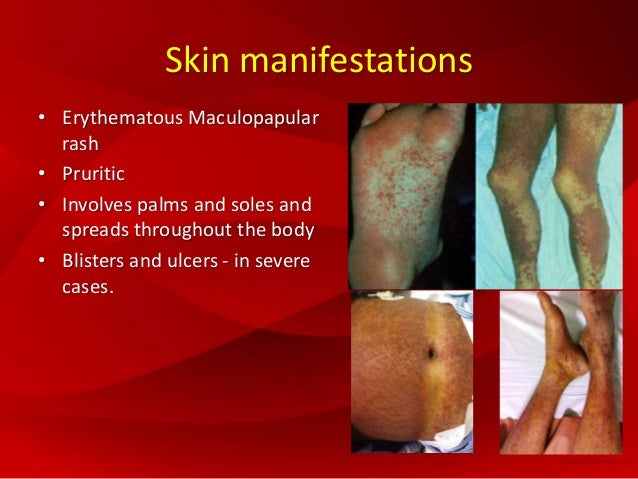
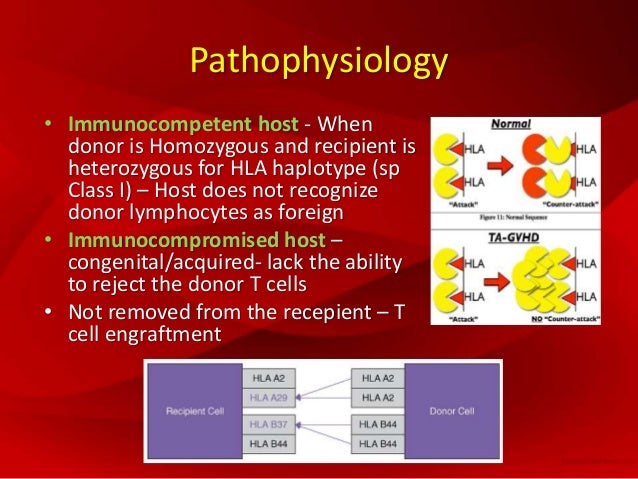





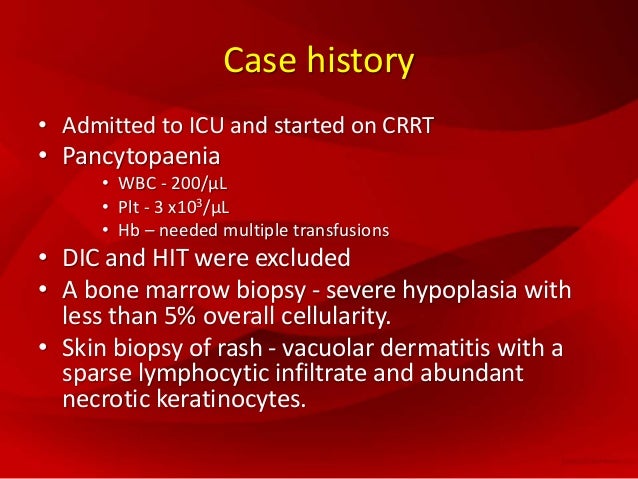




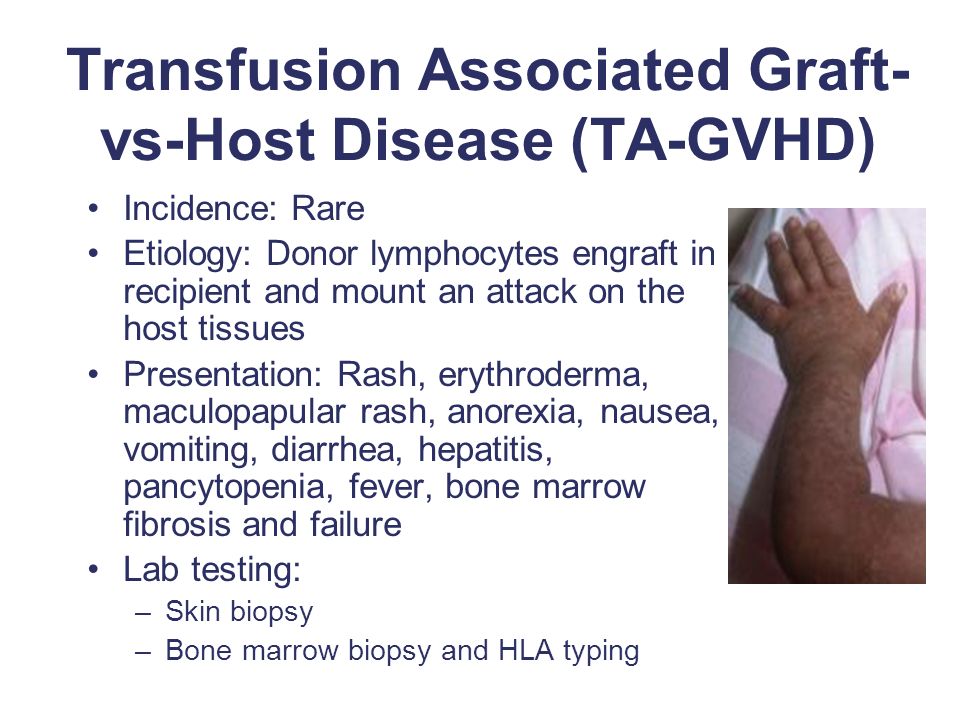

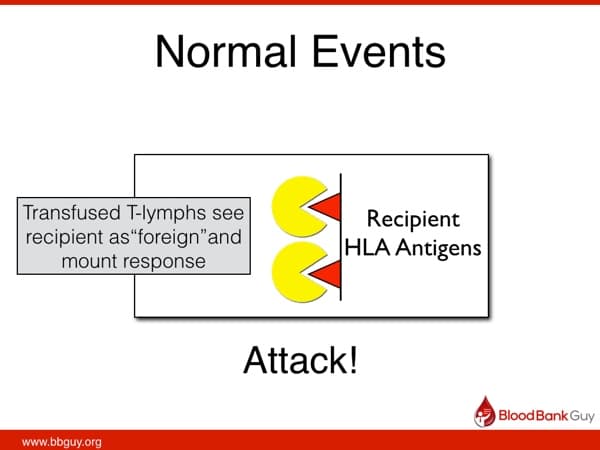
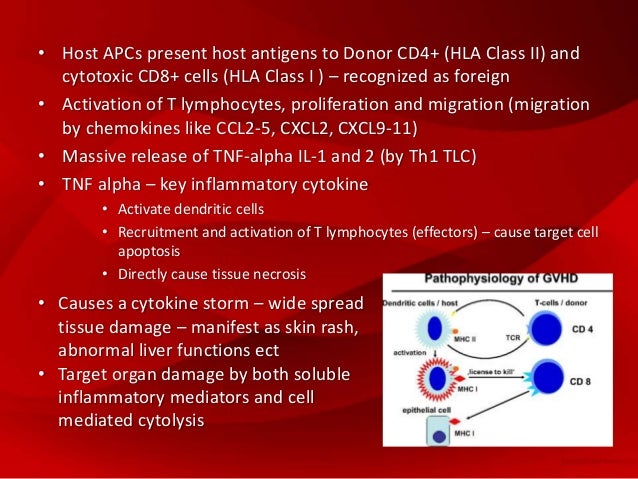
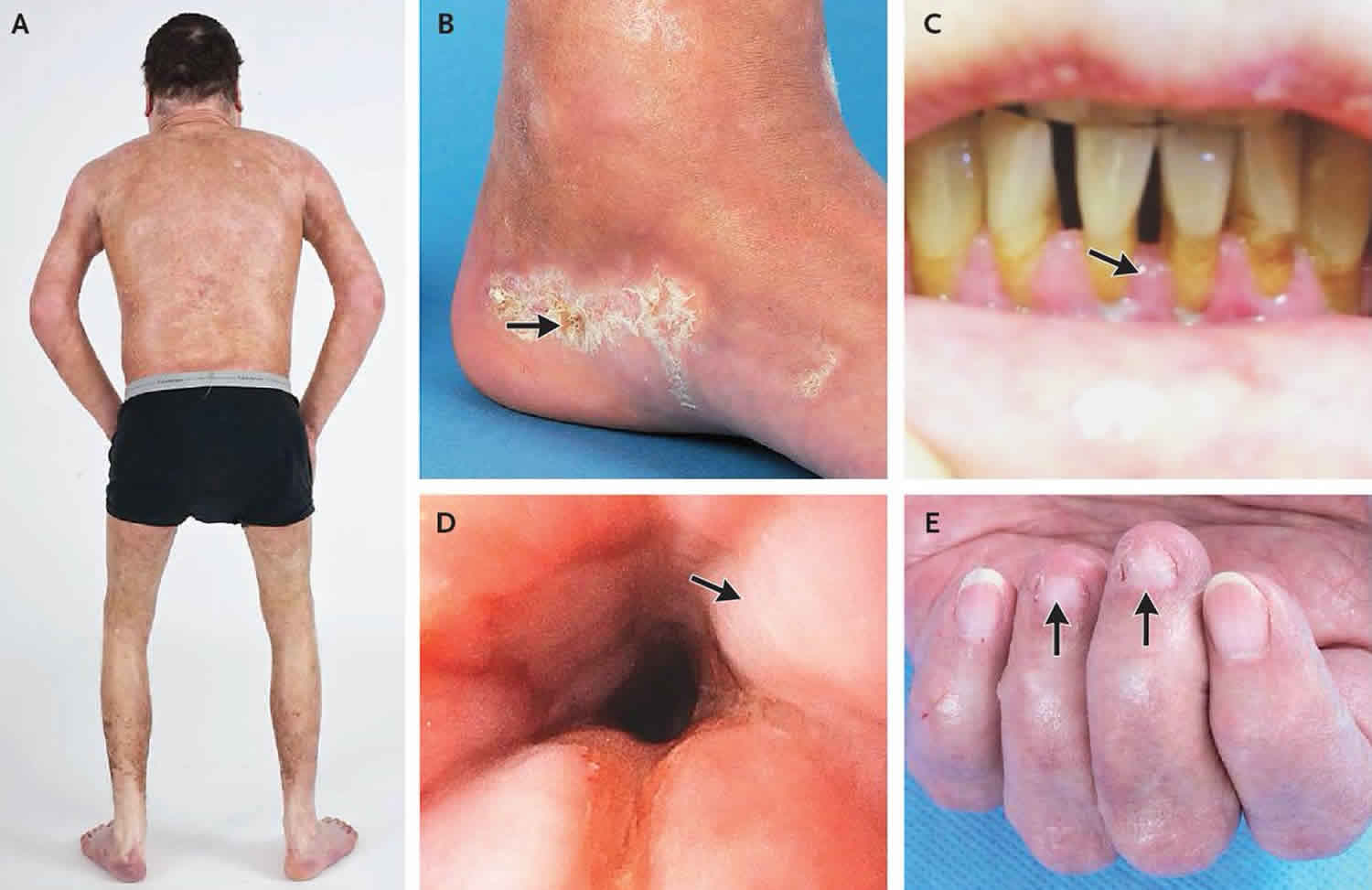




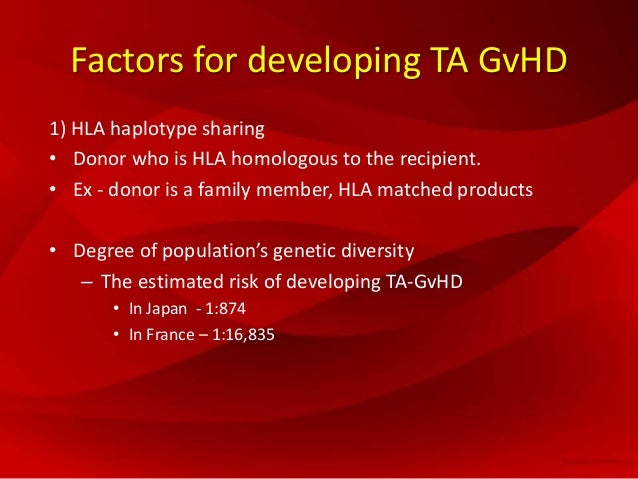




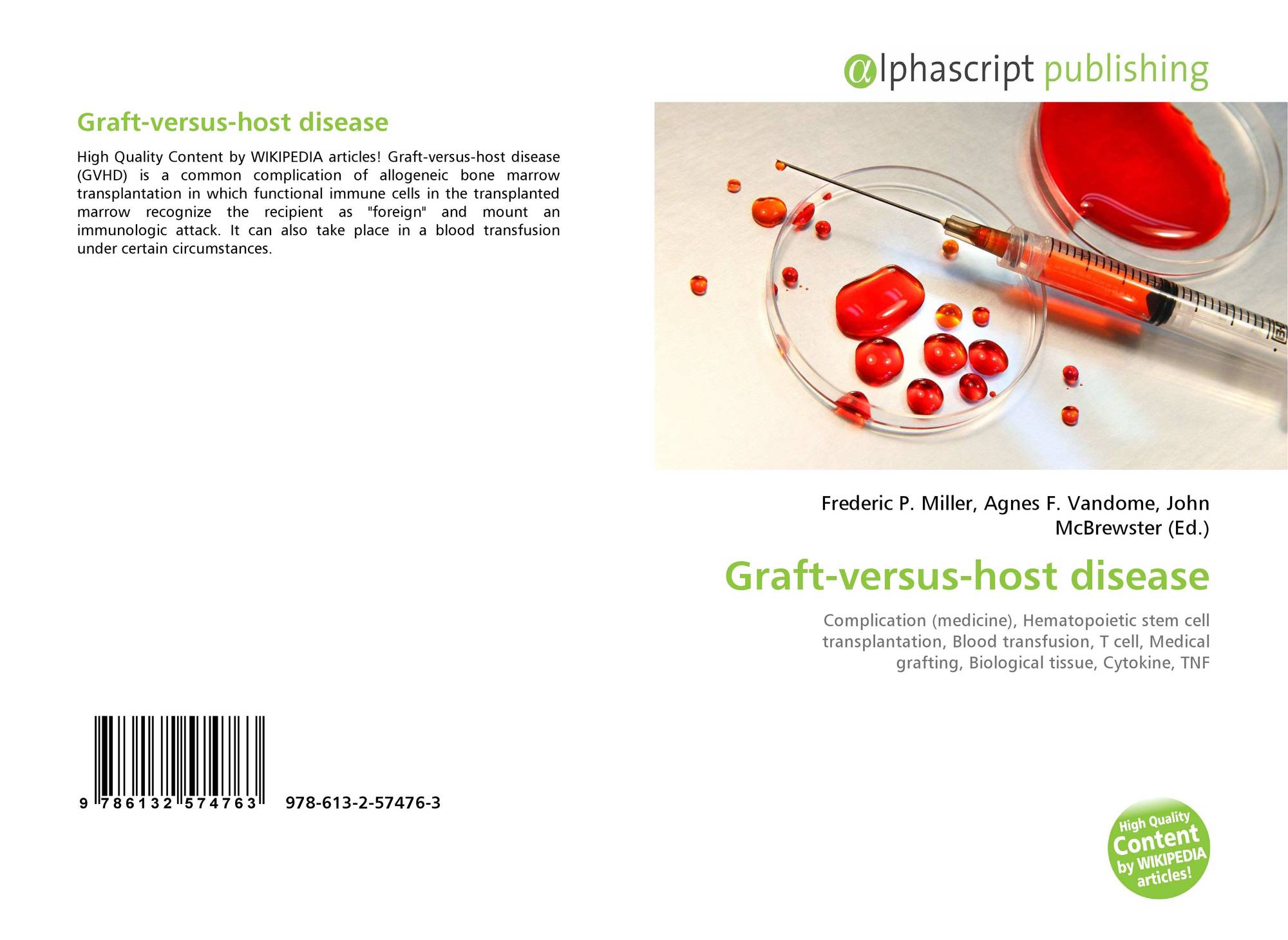











Post a Comment for "Graft Versus Host Disease Blood Transfusion"